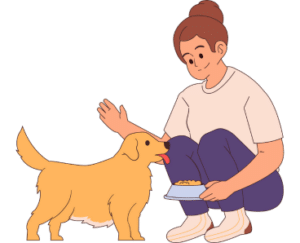Feeling unsure about how much raw food to give your dog? You’re not alone! With so much conflicting information online it’s easy to get confused. But don’t worry we’re here to help!
This guide covers everything you need to know about feeding your dog raw, dry, canned, or homemade meals. You’ll learn how to adjust portions based on your dog’s weight, activity level, and life stage. Plus we’ll share the amazing benefits of raw feeding like boosting your dog’s health, energy, and happiness.
If you don’t know what raw dog food is or what it contains, then you should find out:
Raw dog food is a natural, unprocessed diet made primarily of raw meat and/or bones, combined with other wholesome ingredients. It contains no additives or sugars. This type of diet offers clear benefits, such as improved dental health, healthier skin, a shinier coat, and firmer, less frequent stools.
Types of Raw Food and Their Nutritional Balance
A raw food diet focuses on unprocessed, uncooked foods to preserve nutrients and enzymes. Here’s a breakdown of the main types and their nutritional benefits:
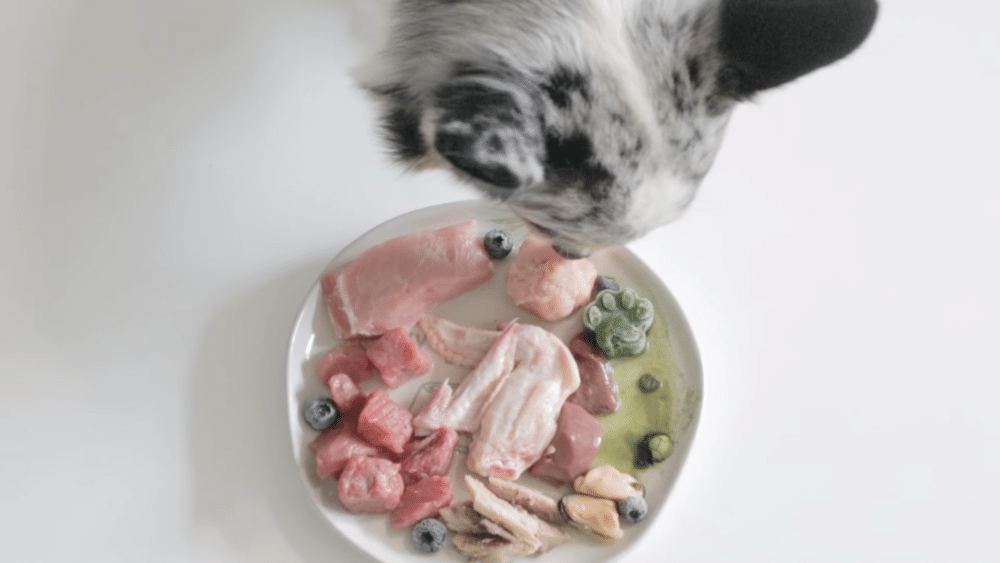
- Fruits
- Examples: Apples, Berries, Bananas, Oranges, etc.
- Nutrition: High in vitamins (C), fiber, and natural sugars low in protein and fat.
- Benefits: Strengthens immunity, aids digestion, and hydrates.
- Vegetables
- Examples: Spinach, carrots, cucumbers, bell peppers, etc.
- Nutrition: High in vitamins (A, C, K), minerals (potassium, magnesium), and fiber.
- Benefits: It is gut health-supportive as well as anti-inflammatory.
- Nuts and Seeds
- Examples: Almonds, walnuts, chia seeds, flaxseeds, etc.
- Nutrition: High in healthy fats, protein, and minerals (magnesium, zinc).
- Benefits: Promotes heart and brain health.
- Sprouts
- Examples: Alfalfa, broccoli, lentil sprouts, etc.
- Nutrition: Packed with enzymes, vitamins (C, K), and antioxidants.
- Benefits: Enhances digestion and nutrient absorption.
- Raw Dairy
- Examples: Unpasteurized milk, cheese, yogurt.
- Nutrition: High in calcium, protein, and probiotics.
- Benefits: Supports bones and gut health.
- Raw Meat/Fish
- Examples: Sushi, sashimi, tartare.
- Nutrition: Rich in protein, omega-3s (fish), and B vitamins.
- Benefits: Supports muscles and brain function.
Why Choose Raw Food for Your Dog?
Choosing raw food for your dog is the closest you can get to a wild dog’s natural diet. It doesn’t include processed ingredients and that fits with the notion that unprocessed diets are healthier for both people and pets. It is a very beneficial strategy for the overall health of your dog.
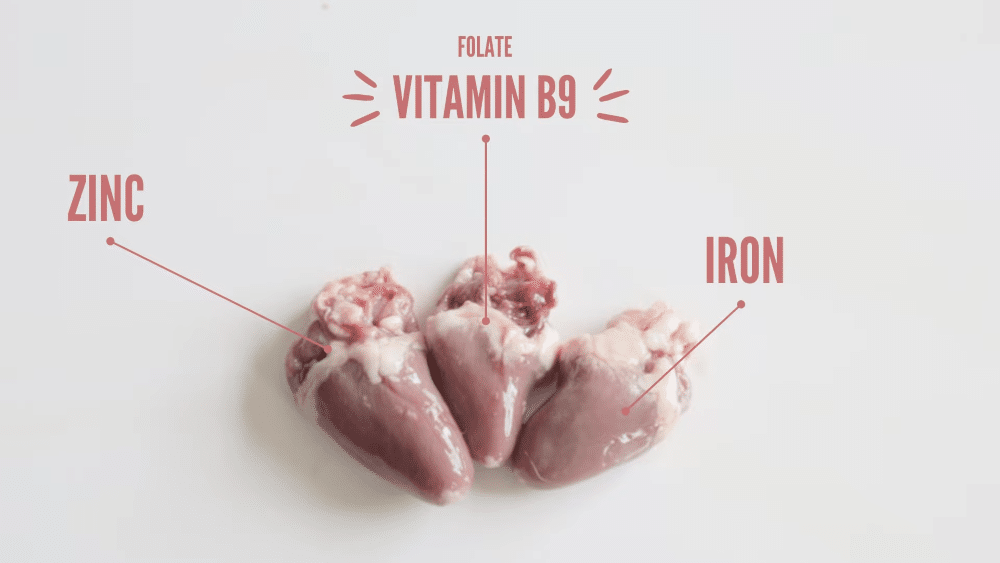
Benefits of Raw Food for Dogs
Feeding your dog a raw food diet offers numerous benefits:
- Healthier Teeth and Fresher Breath: Raw food helps maintain dental health and reduces bad breath.
- Less Frequent Toilet Trips: Dogs on a raw diet tend to drink less water, leading to fewer bathroom breaks and less mess.
- Reduced Risk of Accidents: Since raw food is hydrating, dogs are less likely to become dehydrated, minimizing accidents.
- Improved Digestion: Raw food promotes a better digestive system, resulting in firmer stools and less mess.
- Calmer Behavior: A balanced raw diet can help calm dogs, as processed foods (like Bakers) loaded with additives can cause hyperactivity. While it won’t solve all behavioral issues, it can make a significant difference.
- Ideal for Fussy Eaters: Raw food is often more appealing to picky dogs.
- Healthier Coat: A raw diet can improve the condition of your dog’s fur.
- Allergy Relief: Many dog allergies are mistakenly blamed on protein, but they could be caused by ingredients in processed foods. A raw diet can help identify and eliminate allergens.
How Much Raw Dog Food Should I Feed My Dog
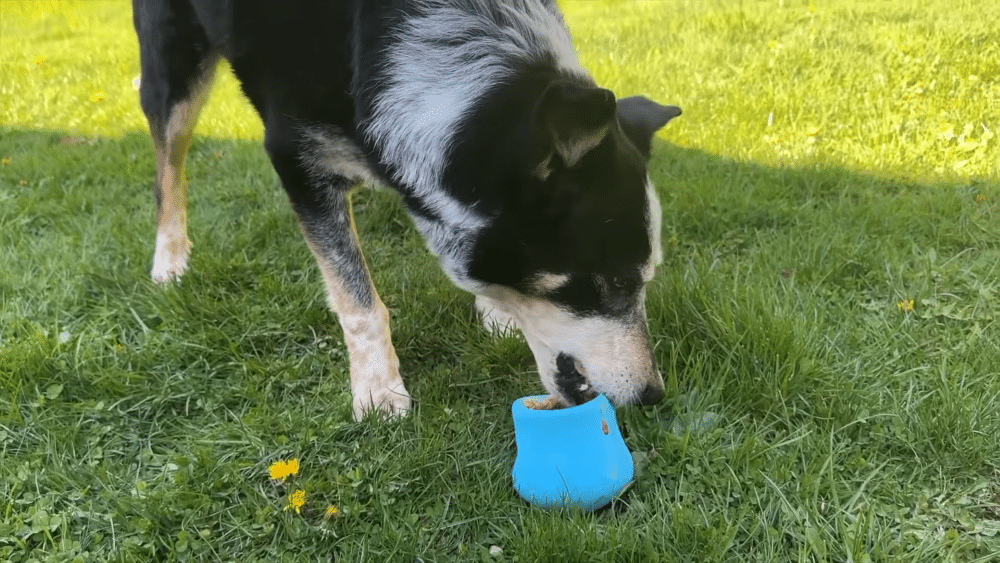
When feeding your dog a raw food diet, the amount they need depends on their age and activity level. Dogs fall into one of four categories:
- 2 to 6 Months Old: Puppies in this age group require 8% of their body weight in raw food per day.
- 6 to 12 Months Old: Puppies in this stage need 4.5% of their body weight per day.
- Adult Dogs: Adult dogs should be fed 2.5% of their body weight daily.
- Senior Dogs: As dogs age and become less active, their food intake can be reduced to 2% of their body weight per day.
These percentages are general guidelines, and individual needs may vary. For example:
- If your dog is highly active, you may need to increase their food slightly.
- If your dog is less active or a “couch potato,” you may need to reduce their portions to maintain a healthy weight.
Best Base Mix for Raw Dog Food
1. Dry Kibble
- General Guideline: For most dogs, the standard recommendation is 1.5 cups of dry kibble per 20 pounds of body weight daily.
- Example: A 20-pound dog like Tula would eat 1.5 cups of kibble per day.
- Feeding Schedule: Split this into two meals—¾ cup in the morning and ¾ cup in the evening.
- Adjustments for Larger Dogs: For a 40-50 pound dog, the daily amount increases to 3 cups of kibble per day.
2. Canned Food
- Solely Canned Food: If your dog eats only canned food, the general rule is 1 can per day for a 20-pound dog.
- Mixing Kibble and Canned Food: If you’re combining both, reduce the amounts proportionally.
- Example: For a 20-pound dog, feed ¾ cup of kibble + ½ can of canned food daily.
3. Homemade Dog Food
Making your dog’s food at home? Here’s how to ensure a balanced diet:
- Ingredients:
- 1/3 Animal Protein: Use high-quality protein like beef, chicken, or turkey.
- 1/3 Healthy Carbohydrate: Options include brown rice, sweet potatoes, or quinoa.
- 1/3 Vegetables: Carrots, spinach, or other dog-safe veggies.
- Portion Size: For a 20-pound dog, feed 1.5 to 2 cups of homemade food daily.
- Example Recipe:
- 1 cup diced beef (protein)
- 1 cup brown rice (carb)
- 1 cup carrots and spinach (veggies)
- 2 tablespoons sunflower oil (for healthy fats)
- 1 scoop canine supplement (for added nutrients).
- Example Recipe:
4. Key Factors to Consider
While the above guidelines are a good starting point, every dog is unique. Here’s what to keep in mind:
- Body Condition Score: Regularly assess your dog’s weight by feeling their ribs.
- If ribs are easily palpable, your dog may be underweight.
- If ribs are hard to feel, your dog may be overweight.
- Activity Level: Highly active dogs may need more food, while less active dogs may need less.
- Life Stage: Puppies, pregnant dogs, and senior dogs have different nutritional needs.
- Example: Pregnant dogs may require up to 3 times their normal food intake.
5. Monitoring and Adjusting
- Signs Your Dog Needs More Food:
- Constantly hungry.
- Losing weight or ribs are too prominent.
- Signs Your Dog Needs Less Food:
- Weight gain or difficulty feeling ribs.
- Low energy or lethargy.
Always monitor your dog’s weight and adjust their food intake as needed. If you have any questions or need assistance, feel free to contact us at Pawland. Our team is always happy to help!
Raw vs. Kibble: Which Is Best for Your Dog?
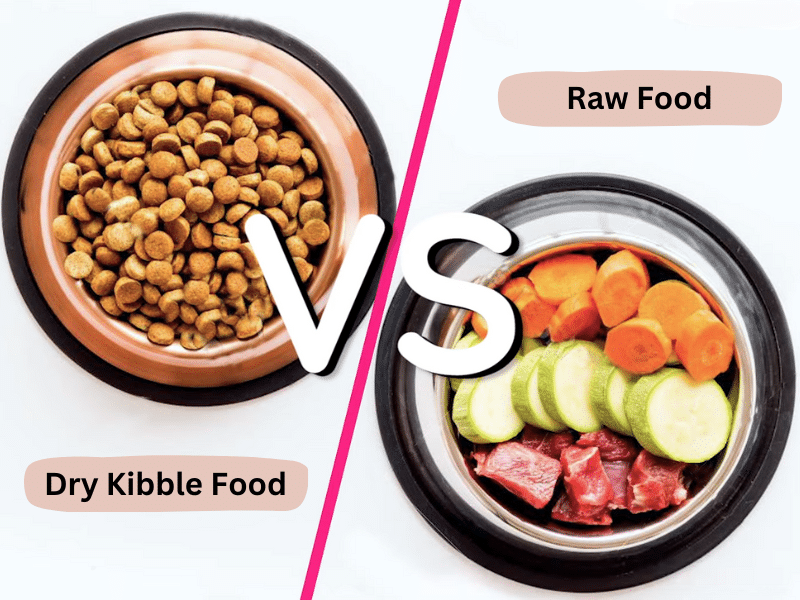
What are the benefits of raw feeding?
It’s all-natural, dogs love it, and you know exactly where the food is coming from, it’s pretty much straight from farm to table. You also know exactly what’s going into your dog’s body.
What are the cons of feeding raw?
It comes down to two things: either it’s super convenient because it’s pre-packaged and balanced for you, but it can be cost-prohibitive. The other option is doing it yourself, which can be messy and time-consuming.
What are the pros of using kibble?
It’s less expensive, usually very convenient, and you don’t have to worry about balancing nutrients. It’s also easier and less messy to use for training.
What are the cons of kibble?
It’s highly processed, and you don’t always know what you’re getting. If you think you’re getting beef or chicken, it’s often by-products. Many kibbles use fillers like cornmeal, which aren’t healthy for your dog. Finally, if you opt for a high-quality premium kibble, it might be just as expensive or even more expensive than feeding raw.
Raw food is healthier but pricier and less convenient, while kibble is budget-friendly and easy but may not be as healthy.
Homemade Raw Diet for Dogs: A Simple, Nutritious Recipe
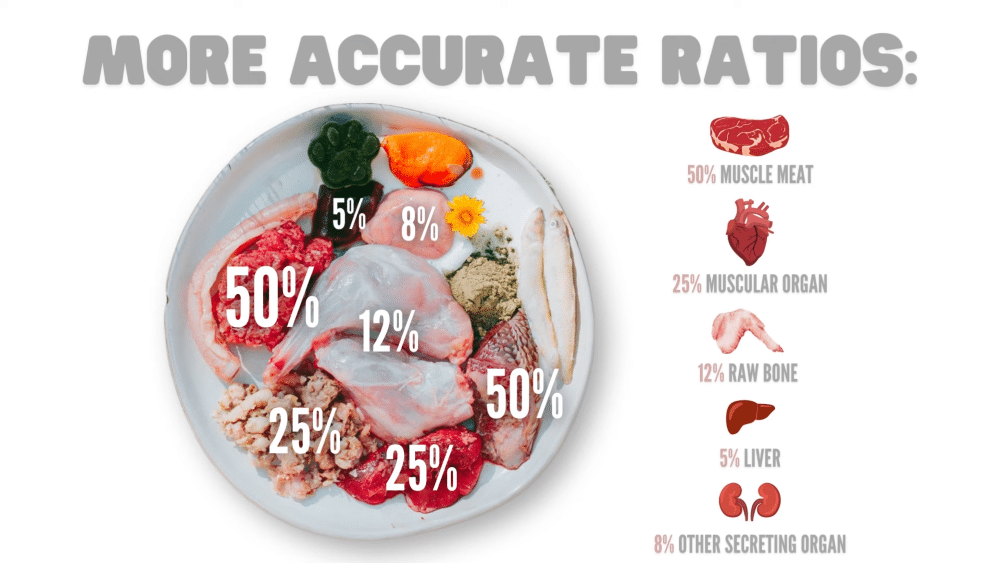
Let’s break it down step by step:
1. The Base: Muscle Meat
Muscle meat makes up the majority of a prey animal’s body, so it’s the foundation of this recipe. Start with:
- 4 ounces (113 grams) of boneless, skinless chicken thigh: Lean, easy to digest, and a familiar flavor for most dogs.
- 5 ounces (142 grams) of 90/10 ground beef: Adds essential nutrients like zinc, iron, and B vitamins, which are lower in white meats.
2. Muscular Organs
Muscular organs like the heart, lungs, and gizzards are nutrient-dense and mimic parts of a prey animal. For this recipe, we’re using:
- 3.4 ounces (96 grams) of chicken heart: Packed with B vitamins, iron, and zinc.
3. Raw Meaty Bones
Raw bones are crucial for strong bones, clean teeth, and providing calcium, phosphorus, and magnesium. For this recipe:
- 5.2 ounces (147 grams) of chicken wings: Easy to find and great for beginners. (For small dogs, remove the drumette.)
4. Secreting Organs
Secreting organs like the liver and kidney are natural multivitamins for carnivores. They’re rich in vitamins and minerals that are hard to find elsewhere.
- 0.4 ounces (11 grams) of beef liver: High in copper and essential nutrients.
- 1.3 ounces (37 grams) of beef kidney: A great source of B vitamins.
Additional Whole Foods
To make this recipe nutritionally complete, we’re adding a few more ingredients:
- 1 ounce (28 grams) of canned pink salmon (in water): Provides omega-3s and vitamin D, which are often low in raw diets.
- 2 ounces (57 grams) of spinach: A plant-based ingredient that adds minerals and fiber. (Cook or puree for better digestibility.)
- 1 teaspoon of seaweed (kelp, dulse, or lava): A concentrated source of iodine, which is often lacking in raw diets.
- 1 gel cap of Vitamin E oil (every 2-3 days): Ensures your dog gets all eight forms of naturally occurring vitamin E.
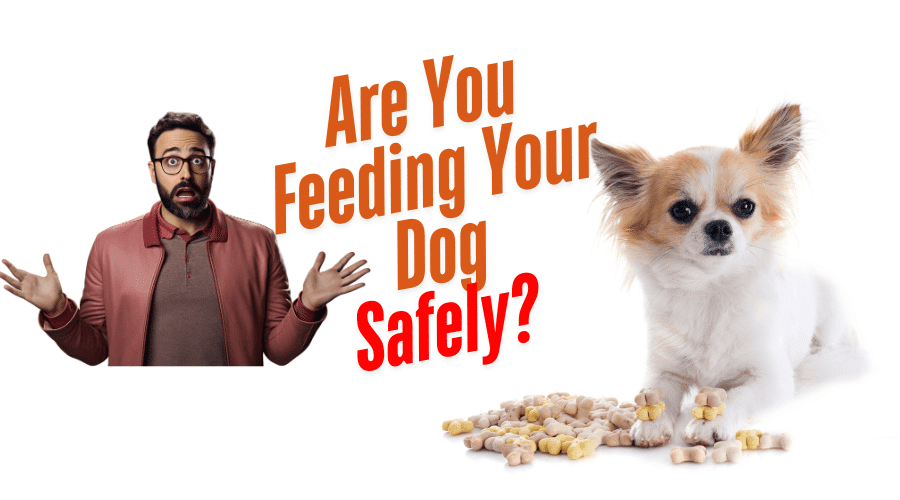
How to Feed Raw Dog Food SAFELY!
If you’re unsure how to safely feed raw food to your dog, it could lead to health issues. This guide provides advanced insights on properly and safely feeding raw food to your pet.
1. Starting with Small Changes
- Adding Fresh Food to Kibble: If you are worried about switching to raw, start by adding fresh food to your dog’s kibble. Replace 10-20% of the kibble with whole foods like eggs, sardines, ground beef, or steamed vegetables. This improves the nutrition of the meal and gives your dog enrichment.
- Watching Your Dog’s Preferences: Offer different foods on the side of the bowl and see what your dog wants. Dogs naturally prefer meat so they will likely choose fresh food over kibble.
2. Transitioning to Pre-Made Raw Food
- Choosing Pre-Made Raw: If you are ready to go raw, start with pre-made, commercially available raw diets. Look for brands that use chunky grinds where you can see the ingredients (e.g. lumps of liver, meat) not ground mush.
- Pet Store Advice: Independent pet stores that sell raw food often have staff that are knowledgeable about the best brands. They have invested in freezers and raw food because they believe in it.
- Supplementing Pre-Made Raw: You can add extra meat, eggs or sardines to pre-made raw food to make sure your dog gets enough muscle meat and variety.
3. Addressing Concerns About Bacteria and Safety
- Bacterial Risks: Raw meaty bones are safe for dogs. Studies show dogs on raw diets don’t have higher rates of bacterial infections. If you are worried start with lightly cooked meats or pre-made raw foods.
- Handling Raw Food: Handle raw food the same as you would raw meat for yourself.
4. DIY Raw Food Diet
- Simple DIY: If you want to make your own raw food start with a basic mix of muscle meat (e.g. beef or chicken), organ meat (e.g. liver), and raw meaty bones (e.g. chicken thighs). A common ratio is 80% muscle meat, 10% organ meat, and 10% bone.
- Variety is Key: Rotate proteins (beef, chicken, turkey, fish) and include a variety of organ meats (liver, kidney, heart) to ensure balanced nutrition.
- Don’t Overcomplicate: You don’t need to follow recipes or use spreadsheets. Just provide a variety of fresh whole foods.
5. Enrichment and Behavioral Benefits
- Chewing and Mental Stimulation: Raw food, especially chunky grinds or whole pieces, provides enrichment through chewing which releases calming chemicals like dopamine.
- Zoo Pharmacognosy: Dogs, like other animals, can self-select the nutrients they need. Offering a variety of foods allows them to choose what their body needs.
6. Addressing Common Myths
- Dogs as Carnivores: Dogs are facultative carnivores meaning they thrive on a meat-based diet but can digest some carbs. However, studies show feral dogs eat meat, bones, and organs with minimal plant matter.
- Carbs in Dog Food: While dogs can digest carbs they don’t need them in large quantities. High-carb diets in kibble are often because carbs are cheap not because they are optimal for dogs.
7. Supplements and Synthetic Vitamins
- Vitamin Premixes: Some pre-made raw or fresh foods include synthetic vitamins to meet AAFCO standards. While not ideal small amounts of synthetic vitamins are generally safe. Whole food sources (e.g. wheat germ oil for vitamin E) are better.
- Natural Supplements: Consider adding natural supplements like fish oil, spirulina, or seaweed for omega-3s and iodine.
8. Traveling and Convenience
- Freeze-Dried or Homemade Dry Food: When traveling you can use freeze-dried raw food or make your own dry food by mixing meat, organs, and oatmeal and then baking it. This is a convenient option.
By taking these steps, you can safely and effectively transition your dog to a fresher, more nutritious diet while addressing common concerns and myths about raw feeding.
Why Raw Dog Food Matters for Your Pet’s Health
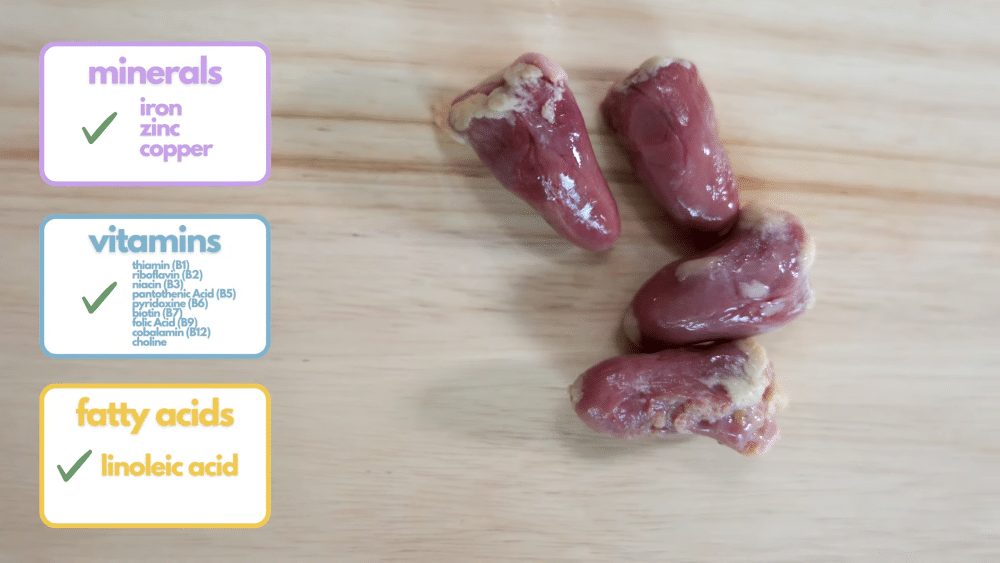
As a pet owner, you want the best for your furry companion, and nutrition plays a vital role in their overall well-being. Raw dog food, packed with natural ingredients, can boost your pet’s energy, improve digestion, and promote a healthier coat. While we specialize in pet sitting and ensuring your pets are cared for in your absence, we understand the importance of a balanced diet for their happiness and health.
Whether you’re considering raw food or need a trusted pet sitter, we’re here to support you every step of the way. Your pet’s health and happiness are our top priorities!
Frequently Asked Questions
Yes, you can mix kibble with raw food. The myth that you cannot mix them is outdated. Unless your dog has shown digestive issues when eating both together, it is completely safe. Adding raw food to kibble can improve digestion, increase moisture, and provide additional nutrients. If needed, you can separate meals (e.g., kibble in the morning and raw at night), but it's not required.
You should feed your dog once a day. A dog's digestive system works in 12-hour increments, and feeding more frequently can lead to digestive issues like regurgitation and gastrointestinal inflammation. Providing nutrient-dense food once a day supports better digestion, reduces inflammation, and promotes overall health and longevity.
You should feed your dog about 2–3% of their body weight per day in raw food. For example, a 20kg (44lb) dog would eat around 400–600 grams daily. Puppies, active dogs, or underweight pets may need more, while seniors or less active dogs may need slightly less.
Yes, raw dog food can be good for dogs when balanced properly. It supports healthier skin, shinier coats, and better digestion. However, make sure it includes the right ratio of meat, bones, and organs and always handle raw food safely to prevent bacteria.
You can refreeze raw dog food once if it was thawed in the fridge and hasn’t been left out at room temperature. Avoid refreezing multiple times, as it can reduce food quality and increase bacterial risk.
Thaw frozen raw meat in the fridge, then portion it into meals. Include lean meats, edible bones, and organs, plus optional veggies or supplements recommended by your vet. Always wash hands and utensils after handling raw food.

